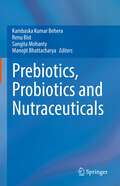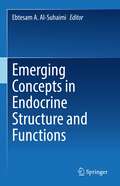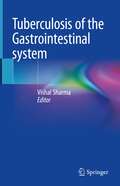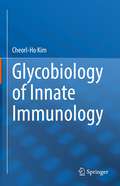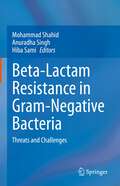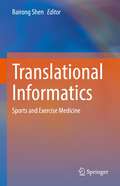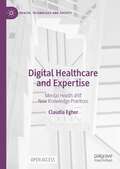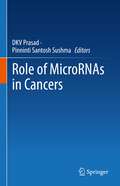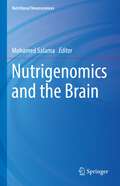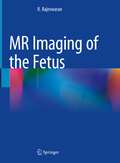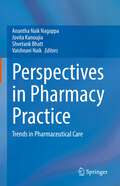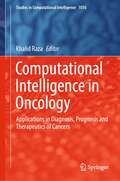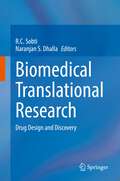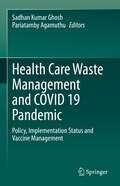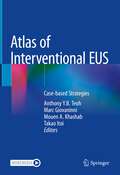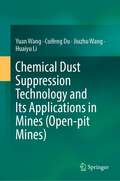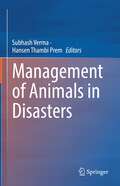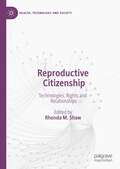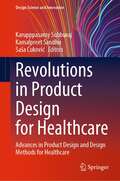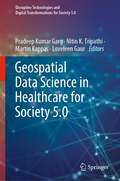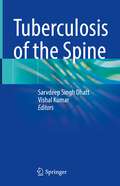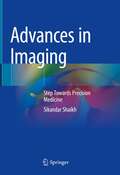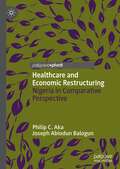- Table View
- List View
Prebiotics, Probiotics and Nutraceuticals
by Kambaska Kumar Behera Renu Bist Sangita Mohanty Manojit BhattacharyaThe book titled ‘Prebiotics, Probiotics and Nutraceuticals’ is expected to direct many emerging research pathwaysneed at local and global levels for nutrition and food supplements for developing immunity for healthy life. This volume incorporates sixteen seminal papers on issue based research and their practical applications covering latest information and progress on different area of nutritional supplement research fight against disease. The book highlights the frontier issues and applications in nutritional biotechnology with wide coverage of the themes like Potentiality of Probiotics in Inactivation of Tetrodotoxin, Therapeutic Strategy for the Deterrence of COVID-19 with Relevance to Probiotics and Prospectives of Prebiotics, Probiotics and Synbiotics for Sustainable Development in Aquaculture.Plant based Bioactive compounds in Cancer Therapeutics, Recent Trends in Natural Medicines and Nutraceuticals Research, Probiotics as efficacious therapeutic option for treating gut-related diseases: molecular and immune-biological perspectives, The progressive development of probiotics, prebiotics, synbiotics research, and its multipurpose use in the ornamental fishery, The commercial perspective of probiotics, and bioremediating components in aquaculture pond management: A Case Study andPrebiotics as promising therapeutics for treating gut-related disorders : Biochemical and Molecular Perspectives. Prebiotics and Probiotics as Functional Foods: Prospect and Promises in Metabolic Diseases, Implications of probiotics and prebiotics on immune functions. Recent Trends in Natural Medicines and Nutraceuticals Research, Nutraceuticals are alternative to modern medicines, Socio-Economic Study of Prospective of probiotic, prebiotic and synbiotic for sustainable development of aquaculture in Indian Sunderban. This book will be very useful for the scholars, biotechnologists, agricultural scientists, nutritionist, medical doctors, researchers, teachers and students in the emerging field of biotechnology.
Emerging Concepts in Endocrine Structure and Functions
by Ebtesam A. Al-SuhaimiThis book uniquely presents conceptual understanding as well as advancements in the field of endocrinology. It emphasizes the harmonization between the function and the structure of different endocrine glands in the body. The book's initial chapters introduce hormones' biological synthesis, structure, function, and signaling pathways. The subsequent chapters examine the functional relationship between hypothalamus and pituitary gland and its leading and regulating roles on other endocrine and non- endocrine organs. A separate chapter discusses the synergistic functions of adrenal glands and pineal gland in the circadian rhythm and analyze the role of corticoids in carbohydrate and mineral metabolism. Furthermore, the book addresses the role of growth hormones, prolactin, gonads regulating hormones, adrenocorticotropin, thyroid hormones, parathormone, gluco- and mineral corticoids, insulin and glucagon, Physiology of bone remodeling is presented with the role of parathyroid glands, C cells and vitamin D explaining the bone as an endocrine organ. The regulation of male and female reproductive functions is represented well. Lastly, the book reviews the novel endocrine role and metabolic aspects of adipose tissue as an endocrine tissue and its relationship to inflammatory diseases, insulin resistance and many metabolic disorders. The book introduces key parts for endocrine’s stem cell in each gland is discussed in term of its survival, proliferation, migration, homing, differentiation and its regeneration and remodeling roles.
Tuberculosis of the Gastrointestinal system
by Vishal SharmaTuberculosis is an important concern in numerous countries across the globe. Training is usually focused on pulmonary tuberculosis, and the nuances of diagnosis and management of extrapulmonary tuberculosis, including abdominal tuberculosis, are not usually emphasized. This book details the varied presentations and mimics of tubercular involvement of the abdomen and the gastrointestinal system . .The book provides clear guidance to the clinicians to diagnosis and manage the varied forms of abdominal tuberculosis. The chapters also touch on areas of controversy and confusion. Chapters are focused on each of the sites (intestinal, peritoneal, gastroduodenal, hepatobiliary, and pancreatic), modalities for evaluation (histology, microbiology, radiology, endoscopic ultrasound, nuclear medicine), differential diagnosis, and follow-up including response to treatment. Separate chapters have also been devoted to pediatric abdominal TB, therapy-related hepatitis, and considerations in immunocompromised states such as HIV. Therefore, this book will help practice clinicians and serve as a one-stop resource for graduate students in internal medicine and fellows training in gastroenterology.
Glycobiology of Innate Immunology
by Cheorl-Ho KimThis book presents the latest knowledge and the most recent research results on glycobiology of innate immunology. Innate immunity is the crucial part of the immunological defense system that exerts their distinct functions through binding to certain functional glycoproteins. They play a role in various human diseases and also function against microbial invaders and self-associated molecular patterns. Co-regulated expression of glycan-binding is associated with many biological components such as cellular oncotransformation, phenotype change, neuronal or embryonic development, regulation of cell division, cell–cell interaction, cell attachment, adhesion, and motility, and intracellular signaling via protein–carbohydrate or carbohydrate–carbohydrate interactions.This book opens by providing the key background on glycans in innate immunity and its mechanisms behind the Dendritic cell interactions during infection and inflammation are examined in depth, and the concluding chapter is devoted to signaling tumor immunotherapy. Up-to-date information is then presented on all aspects of glycan structure-recognizing signaling. The book should assist in the further development of new strategies against emerging infectious agents and intractable diseases.
Beta-Lactam Resistance in Gram-Negative Bacteria: Threats and Challenges
by Mohammad Shahid Anuradha Singh Hiba SamiThis timely book discusses antimicrobial drug resistance, specifically, the resistance against the beta-lactam class of antibiotics by Gram-Negative bacteria. The book is broadly divided into five sections. The first section describes the underlying mechanisms of antimicrobial resistance in Gram-negative bacteria. It gives an insight into the beta-lactamases, their types, classification, inhibitors, etc. The second section delves deep into the genetic basis of resistance. It talks about transposons, integrons, insertion sequences associated with antibiotic-resistant genes. The next section describes phenotypic and molecular methods to detect beta-lactam resistance. The fourth section talks about the epidemiology and prevalence of beta-lactamases in the environment. The last section of the book describes the various therapeutic options to combat this growing public threat of antimicrobial resistance. It talks about the current reserve drugs, as well as the newer antibiotic agents that are in the pipeline. This book is essential for clinical practitioners, students, and researchers in basic and medical microbiology.
Advances in Toxicology and Risk Assessment of Nanomaterials and Emerging Contaminants
by Liang-Hong Guo Monika MortimerThis book details the state-of-the-art methodological advances for delineating the toxicology and working mechanisms of nanomaterials, microplastics, fine aerosol particulates (PM2.5) as well as emerging organic pollutants. It also provides latest computational approaches for toxicity prediction and risk assessment of nanoscale materials which possess realistic chances to enter the environment and human organism. Written by leading scientists at the frontiers of environmental science and nanomedicine, this book is intended for both young researchers and experienced professionals working in the fields of environmental protection, human health and occupational safety, nanotechnology, material science and nanomedicine, as well as graduate students majoring in environmental and health sciences.
Translational Informatics: Sports and Exercise Medicine (Advances In Experimental Medicine And Biology Ser. #1005)
by Bairong ShenThe book provides readers the informatics and data-driven models for the discovery of personalized excise prescriptions applied to different cases. Overdiagnosis or over-treatment often happened since the complex interaction among the lifestyle, genetic, and environmental factors. Sports and exercise are reported efficient to prevent or reduce the risk of diseases, but the interactions between sports/exercise and disease are personalized and complex. Translational informatics is a powerful paradigm and it promotes the transfer of big data, knowledge and models to the precision application of sports to prevent diseases. Sports and exercise may have different effects on diverse diseases including cancers, neurodegenerative disease, and cardiovascular diseases, etc. This book covers many modern informatics models such as ontologies, knowledge graphs, blockchain, participatory medicine, semantic artificial intelligence, big data modeling, and so on. It also describes the challenges for the sports and exercise medical data sharing and standardization, the privacy protection of data as well as the integration of data from genomic level to physiological phenotype level. This book will be helpful to the readers who are interesting in sports and exercise medicine, healthcare, big data modeling, artificial intelligence in medicine and healthcare.
Digital Healthcare and Expertise: Mental Health and New Knowledge Practices (Health, Technology and Society)
by Claudia EgherThis open access book explores how expertise about bipolar disorder is performed on American and French digital platforms by combining insights from STS, medical sociology and media studies. It addresses topical questions, including: How do different stakeholders engage with online technologies to perform expertise about bipolar disorder? How does the use of the internet for processes of knowledge evaluation and production allow for people diagnosed with bipolar disorder to reposition themselves in relation to medical professionals? How do cultural markers shape the online performance of expertise about bipolar disorder? And what individualizing or collectivity-generating effects does the internet have in relation to the performance of expertise? The book constitutes a critical and nuanced intervention into dominant discourses which approach the internet either as a quick technological fix or as a postmodern version of Pandora’s box, sowing distrust among people and threatening unified conceptualizations and organized forms of knowledge.
Role of MicroRNAs in Cancers
by Dkv Prasad Pinninti Santosh SushmaThis book discusses the potential roles of miRNA as a crucial regulator in cancer biology. It examines the regulation of drug resistance by miRNAs in cancers and the mechanism of their deregulated expression. The book discusses the role and molecular mechanism of miRNA in regulating cellular proliferation and cell cycle. It analyses circulating miRNAs as biomarkers for cancer diagnosis and prognosis. It also analyzes the role of miRNA as a modulator of the development and function of tumor-associated immune cells. It explores the cross-talk between miRNA and reactive oxygen species (ROS) in pathogenesis, cancer therapeutic tolerance, and resistance. It provides insights into the role of miRNA in cancer angiogenesis, metastasis and describes strategies and associated challenges of miRNA-based therapies.
Nanotechnology for Infectious Diseases
by Saif Hameed Suriya RehmanThis book aims to cover the applications of nanotechnology against human infectious diseases. The chapters of the book discuss the role of nanotechnology in the efficient diagnosis and treatment of these diseases. It explicitly provides an overview of nanodiagnostics for infectious diseases from nanoparticles-based, nanodevice-based, and point-of-care platforms. The book also covers the state-of-the-art review of recent progress in biomimetic and bioengineered nanotherapies to treat infectious diseases. It also presents a nano carrier-based CRISPR/Cas9 delivery system for gene editing and its applications for developing interventional approaches against communicable diseases. Further, it reviews the recent developments in nanotechnology to engineer nanoparticles with desired physicochemical properties as a line of defense against multi-drug resistance micro-organisms. Cutting across the disciplines, this book serves as a guide for researchers in biotechnology, parasitology, and nanotechnology.
Nutrigenomics and the Brain (Nutritional Neurosciences)
by Mohamed SalamaDr. Mohammed Salama is Atlantic senior fellow for Equity in brain health at the Global Brain Health Institute (GBHI) and Associate professor at the Institute of Global Health and Human Ecology at the American University in Cairo (AUC). He established the first Translational Neuroscience Unit in Egypt. Mohamed’s collaborative research led to establishing the Egyptian Network for Neurodegenerative Disorders Mohamed was selected as a SOT Global Senior Scholar in 2013 and Translational/bridging awardee in 2016. He was awarded by Parkinson’s and Movement Disorders Foundation (PMDF) for his continued research in neurodegeneration. Recently, Mohamed and his colleagues succeeded in drafting the first Reference Egyptian Genome and collaborating with other colleagues to start a national cohort (A Longitudinal Study of Egyptian Health Aging [AL-SEHA]).
MR Imaging of the Fetus
by R. RajeswaranThis book presents the anatomy and MRI features of the normal fetus and describes the anomalies of each system in a systematic way. The normal fetal brain at different gestational ages is also extensively illustrated. It features a treasure of MR images illustrating several clinical conditions. Sonographic images, line diagrams and post-natal images are supplemented for easy learning. It also addresses the differential diagnoses and prognostic indicators of the various fetal anomalies.This book will help the consultants and postgraduates of radiology, obstetrics, fetal medicine and pediatrics in understanding various fetal anomalies and in patient counseling.
Perspectives in Pharmacy Practice: Trends in Pharmaceutical Care
by Anantha Naik Nagappa Jovita Kanoujia Shvetank Bhatt Vaishnavi NaikThis comprehensive text provides information on fundamental principles of clinical practice and how these can be implemented to provide excellent treatment to the patients. The triads of health care delivery include Physicians, Pharmacist and Nurses that have distinct roles and responsibilities of patient care. Effective pharmacy practice requires an understanding of the social context within which pharmacy is practiced, recognizing the particular needs and circumstances of the users of pharmaceutical services and of pharmacy's place within health service provision. This book presents a contemporary view of pharmacy practice research covering theories, methodologies, models and techniques that are applicable. The initial chapters describe the basics of pharmacy profession and what is the key role and responsibilities of Pharmacist in health care delivery. The central part of the book illustrates the community, hospital and ethics regarding drug formulation. The last chapters cover the therapeutic aspect of pharmacy and how these can be employed to improve patient’s health care facilities.
Computational Intelligence in Oncology: Applications in Diagnosis, Prognosis and Therapeutics of Cancers (Studies in Computational Intelligence #1016)
by Khalid RazaThis book encapsulates recent applications of CI methods in the field of computational oncology, especially cancer diagnosis, prognosis, and its optimized therapeutics. The cancer has been known as a heterogeneous disease categorized in several different subtypes. According to WHO’s recent report, cancer is a leading cause of death worldwide, accounting for over 10 million deaths in the year 2020. Therefore, its early diagnosis, prognosis, and classification to a subtype have become necessary as it facilitates the subsequent clinical management and therapeutics plan. Computational intelligence (CI) methods, including artificial neural networks (ANNs), fuzzy logic, evolutionary computations, various machine learning and deep learning, and nature-inspired algorithms, have been widely utilized in various aspects of oncology research, viz. diagnosis, prognosis, therapeutics, and optimized clinical management. Appreciable progress has been made toward the understanding the hallmarks of cancer development, progression, and its effective therapeutics. However, notwithstanding the extrinsic and intrinsic factors which lead to drastic increment in incidence cases, the detection, diagnosis, prognosis, and therapeutics remain an apex challenge for the medical fraternity. With the advent in CI-based approaches, including nature-inspired techniques, and availability of clinical data from various high-throughput experiments, medical consultants, researchers, and oncologists have seen a hope to devise and employ CI in various aspects of oncology. The main aim of the book is to occupy state-of-the-art applications of CI methods which have been derived from core computer sciences to back medical oncology. This edited book covers artificial neural networks, fuzzy logic and fuzzy inference systems, evolutionary algorithms, various nature-inspired algorithms, and hybrid intelligent systems which are widely appreciated for the diagnosis, prognosis, and optimization of therapeutics of various cancers. Besides, this book also covers multi-omics exploration, gene expression analysis, gene signature identification of cancers, genomic characterization of tumors, anti-cancer drug design and discovery, drug response prediction by means of CI, and applications of IoT, IoMT, and blockchain technology in cancer research.
Biomedical Translational Research: Drug Design and Discovery
by R. C. Sobti Naranjan S. DhallaThis book, which is the third volume of Biomedical translational research, focuses on the fundamental role of biomedical research in developing new medicinal products. It emphasizes the importance of understanding biological and pathophysiological mechanisms underlying the disease to discover and develop new biological agents. The book uniquely explores the genomic computational integrative approach for drug repositioning. Further, it discusses the health benefits of nutraceuticals and their application in human diseases. Further, the book comprehensively reviews different computational approaches that employ GWAS data to guide drug repositioning. Finally, it summarizes the major challenges in drug development and the strategies for the rational design of the next generation more effective but less toxic therapeutic agents.
Health Care Waste Management and COVID 19 Pandemic: Policy, Implementation Status and Vaccine Management
by Sadhan Kumar Ghosh Pariatamby AgamuthuThis book deals with the general principles, policy instruments, sustainability of supply chain, and business of health-care waste (HCW) management including inputs on exercise in immune health defense against COVID 19. Health-care waste management is very important in any country for protection of environmental and animal and human health. The COVID-19 pandemic, in addition, has augmented this importance to a greater extent. Italy has been successful in curbing the problems related to HCW management during the COVID-19 pandemic at very fast rates from the worst situation, while for a few countries in Asia and Africa, challenges still exist. It is necessary that policy makers, researchers, and implementers gain more knowledge and information on these aspects and improve the strategies and actions. Addressing these issues will reduce the cost of health care as well as resource inefficiency hindering sustainable development goals. This book is of interest and useful to practitioners, capacity builders and policy makers, entrepreneurs, NGOs, and general people, and is a valuable source of reference to the relevant researchers and students in global markets. The book serves as a reading material for undergraduate and graduate students of environmental science, waste management, and medical science. National and international scientists as well as policy makers will also find this to be a useful read.
Atlas of Interventional EUS: Case-based Strategies
by Anthony Y. B. Teoh Marc Giovaninni Mouen A. Khashab Takao ItoiThis atlas aims to systematically provide a case-by-case discussion on selected interventional endoscopic ultrasonography (EUS) procedures and how to approach such procedures on different patients. The atlas offers illustrations of the interventional procedures and several cases of the procedures are included. Within each case, a standardized report is provided including a brief history, imaging findings, a detailed discussion on treatment options, considerations in the EUS intervention, how to perform the procedures and final outcomes. EUS-guided drainages of the bile duct, pancreatic duct, gallbladder and abscesses are summarized. Ablative procedures including celiac plexus, pancreatic cyst and radiofrequency ablations are also covered. Other procedures guided by EUS, including gastroenterostomy, injected therapy, iodine beads insertion and fiducial marker insertion and endovascular interventions are further demonstrated. Gastroenterologists and surgeons can benefit from this atlas on learning strategies and preparing for these procedures.
Chemical Dust Suppression Technology and Its Applications in Mines (Open-pit Mines)
by Yuan Wang Cuifeng Du Jiuzhu Wang Huaiyu LiThis book focuses on the study of chemical dust suppression in mine dust pollution control by means of theories, experiments, computer simulation, and case application, aiming at providing chemical dust suppression solutions for mining worksites. It has seven chapters, including the following contents: (1) introduces fundamental theories and applications of chemical dust suppression, analyzes the dust source intensity of worksites and the mechanisms of dust generation, and summarizes the dust control measures for different mining worksites. (2) According to the mechanisms of dust generation in different mining worksites, targeted dust suppressants were developed. Through optimization by monomer experiment and orthogonal experiment, the optimum formula of different types of dust suppressants was obtained, and its properties were characterized. (3) The dust suppressant field application process was introduced, and the economic benefits were analyzed. This book is expected to provide valuable references both for researchers and engineering technicians engaged in environmental engineering, safety engineering, occupational health, and mining metallurgical engineering, and it also serves as a textbook for graduate students in above disciplines.
Management of Animals in Disasters
by Subhash Verma Hansen Thambi PremThis book is a comprehensive guide for veterinary and humanitarian professionals to plan emergency responses for the care and welfare of animals. It covers various topics on disasters, such as principles of disaster management, operation planning, team deployment, etc., from the perspective of saving both livestock and the livelihood of vulnerable communities. The book also discusses the importance of early warning systems, biosecurity, techniques for data collection, one health approach, climate change, and appropriate mitigation strategies. It highlights different principles, approaches, and guidelines related to the rescue, relief, and management of animals during disasters. It also contains topics on the welfare of birds and the rescue and relief of wild animals. This book includes essential veterinary and life-saving supplies required by the relief providing teams during emergencies such as disasters. The book helps administrators understand the key aspects of welfare and management of animals during disasters and enable them to draft policies focusing on humans and animals’ rescue & welfare and protection of livelihoods. It is an essential guide for veterinarians, humanitarian workers, field functionaries, farmers, disaster response forces personnel, etc., during various types of disasters and emergencies.
Reproductive Citizenship: Technologies, Rights and Relationships (Health, Technology and Society)
by Rhonda M. ShawThis book addresses responses to the predicament of medical and social infertility. It draws on international research to examine the dimensions of reproductive citizenship in relation to decision-making about a range of issues: from fertility preservation and the desirability of family creation as a normative expectation of social participation, to how families manage and negotiate engagement with providers of reproductive materials and services around information disclosure and contact, and how they consider their social obligations and responsibilities in relation to the use of assisted reproductive technology (ART).
Revolutions in Product Design for Healthcare: Advances in Product Design and Design Methods for Healthcare (Design Science and Innovation)
by Karupppasamy Subburaj Kamalpreet Sandhu Saša ĆukovićThis book coherently presents advances in design principles, processes, and methods in healthcare product design. It captures the implications of technological advances on designing healthcare products especially when market and societal needs pull each other in opposite directions. The contents focus on innovative design thinking processes and methods in developing healthcare products, applications of digital technologies in healthcare product design, amalgamation of artificial intelligence and design thinking for healthcare product design and quality, sustainability, and regulatory aspects in the design process. This book is a useful reference for those in the industry and academia.
Geospatial Data Science in Healthcare for Society 5.0 (Disruptive Technologies and Digital Transformations for Society 5.0)
by Pradeep Kumar Garg Nitin K. Tripathi Martin Kappas Loveleen GaurThe book introduces a variety of latest techniques designed to represent, enhance, and empower multi-disciplinary approaches of geographic information system (GIS), artificial intelligence (AI), deep learning (DL), machine learning, and cloud computing research in healthcare. It provides a unique compendium of the current and emerging use of geospatial data for healthcare and reflects the diversity, complexity, and depth and breadth of this multi-disciplinary area. This book addresses various aspects of how smart healthcare devices can be used to detect and analyze diseases. Further, it describes various tools and techniques to evaluate the efficacy, suitability, and efficiency of geospatial data for health-related applications. It features illustrative case studies, including future applications and healthcare challenges. This book is beneficial for computer science and engineering students and researchers, medical professionals, and anyone interested in using geospatial data in healthcare. It is also intended for experts, offering them a valuable retrospective and a global vision for the future, as well as for non-experts who are curious to learn about this important subject. The book presents an effort to draw how we can build health-related applications using geospatial big data and their subsequent analysis.
Tuberculosis of the Spine
by Sarvdeep Singh Dhatt Vishal KumarThis book covers all aspects and dimensions of tuberculosis affecting the spine, starting from its historical perspective to modern trends in early diagnosis, management, and rehabilitation. This book is a treatise fulfilling all the existing wide lacunae in suspicion, clinical examination, diagnosis, and management of this disease which still dwells as a mystery in modern medicine. It presents very easy to follow management plan algorithms and keynotes for easy and ready reference in each chapter. It describes the recent advances in diagnostic modalities and the treatment regimes, along with controversies, that have been elucidated and concluded with firm and sound references from evidence-based literature. This book also showcases the varied presentations of the disease as per varied socio-economic strata and in different geographic regions along with the different, principle-based approach to the disease spectrum shall be discussed at length. It also includes different clinical settings and scenarios in the concerned chapters. This book is a ready reference guide for postgraduate trainees, post-doctoral trainees, and faculty and consultants of orthopedics and neurosurgery.
Advances in Imaging: Step Towards Precision Medicine
by Sikandar ShaikhThis book covers all the advances in the imaging and elaborates on their applications and advantages. It provides step by step overview of the various advanced imaging modalities like molecular imaging, nano imaging, robotic imaging, stem cell imaging, optical imaging, immunoimaging, etc. It describes the applications of various advanced imaging modalities in pathologies like oncology, infection and inflammation and other conditions and provides the available therapeutic options with the help of these modalities. It also covers the detailed aspects of various modalities like ultrasound, CT, MRI, PET-CT, PET-MRI and other modalities. It includes the detailed explanation of various radiotracers, biomarkers and probes with many applications. Chapters cover detailed information at molecular level. The book is helpful for oncologists, hematologists, surgeons and many other specialists.
Healthcare and Economic Restructuring: Nigeria in Comparative Perspective
by Philip C. Aka Joseph Abiodun BalogunThis book explores the intersection between healthcare delivery and national economic health, using Nigeria as case study and window into the world. Specifically, the issue this book tackles revolves around how to repair Nigeria’s dysfunctional healthcare system through the medium of a healthier economy that provides sufficient revenue to meet the healthcare needs of citizens.
